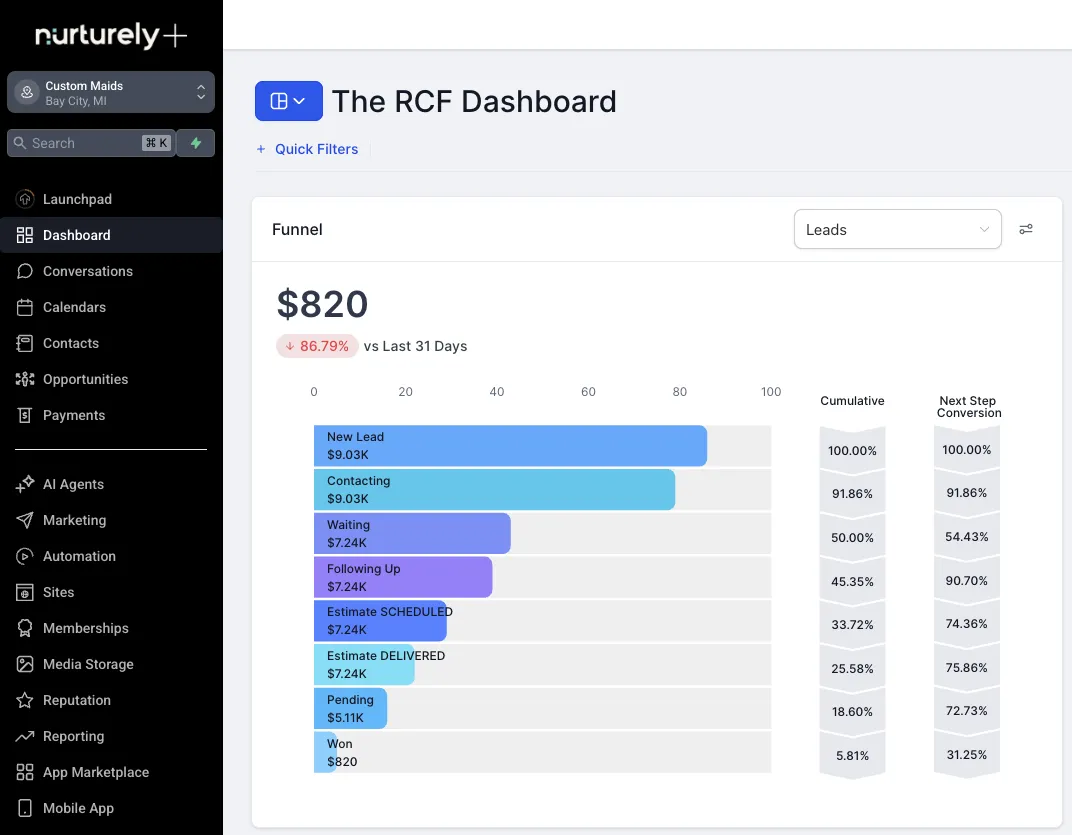How Much to Charge for Painting
How Much to Charge for Painting A Definitive Guide
Figuring out how much to charge for painting can feel like you’re just pulling numbers out of thin air, but it really boils down to a few standard methods that pros use every day. Typically, you'll see painters charging $2 to $6 per square foot for interior work, $50 to $100 per hour, or a day rate somewhere between $400 and $800. These figures are a fantastic starting point and will help you quote jobs with real confidence.
Quick Answers to Your Painting Price Questions

Before we get into the nitty-gritty of overhead and profit margins, it’s a good idea to get a handle on the basic pricing models used across the industry. Think of these common rates as your "cheat sheet" for giving potential clients a quick, ballpark estimate. It's the first real step in moving from uncertainty to profitable, professional quoting.
These aren't just random numbers; they’re battle-tested approaches that reflect different project needs and business strategies. Knowing when to use each one is what separates the pros from the amateurs and makes sure you're paid fairly for your time and expertise.
The Three Main Pricing Models
The most common ways to structure your charges are by the square foot, by the hour, or by the day. Each one has its place, and a lot of experienced painters I know actually use a mix of these depending on the job’s specific demands.
Per Square Foot: This is your go-to for standard jobs, like painting the walls in a few empty rooms. It’s super straightforward for clients to understand and simple for you to calculate on the spot.
Per Hour: I lean on this model for projects with a lot of unknowns or highly detailed work. Think intricate trim, tons of repairs, or navigating rooms packed with furniture.
Per Day: A day rate works wonders for smaller projects that won't take a full day or for clients who want to book your services for a set period to knock out a punch list.
A classic rookie mistake is picking one pricing method and trying to make it fit every single job. A savvy painter knows a historic home with extensive trim work shouldn't be priced the same way as a big, empty commercial space. The real key is matching your pricing model to the project's complexity.
Common Painting Rates At a Glance
To give you a clearer picture, I've put together a quick table of typical rates. Keep in mind, these are national averages. A painter in a high-cost city like San Francisco is naturally going to charge more than someone in a small rural town to cover higher overhead and living costs.
Your own experience level plays a huge role, too. A master painter with 20 years under their belt commands a much higher rate than someone just starting out, and rightfully so.

Treat these numbers as your baseline. They don't yet account for critical factors we’ll dive into later, like the cost of paint and materials, your business overhead, or your desired profit margin. Think of this table as the foundation for building a detailed, accurate quote that ensures every project you take on is a profitable one.
Calculating Your Core Labor Costs
Let’s get real for a second. Your time is your single most valuable asset in this business, which makes labor the biggest chunk of any painting quote you write. If you get this number wrong, you’re basically working for free. Or worse, you’re paying to work on someone else’s house.
It's time to stop pulling a simple hourly wage out of thin air. We need to build a real labor cost formula that actually protects your bottom line.
The biggest mistake I see painters make is forgetting about all the non-billable tasks that eat up the clock. They only think about the hours spent with a brush in hand, and that’s a recipe for disaster.
This breakdown shows you where labor fits into the bigger picture of a profitable quote.

As you can see, figuring out your labor is the bridge between your material costs and your final price. It’s the pivot point. Get it right, and you’re on your way to a profitable job.
Estimating Total Project Time
First things first: you need to do a thorough walkthrough of the space. I mean, really look at it. Mentally clock every single task you'll have to do from the moment you arrive until the moment you drive away for the last time. Think way beyond just rolling paint on walls.
Your time estimate has to include all the little things that add up fast:
Serious Prep Work: This is where a pro job separates itself from an amateur one. You have to factor in time for washing walls, patching holes, sanding down imperfections, caulking every gap, and meticulously taping off trim, windows, and light fixtures.
Furniture & Fixture Wrangling: Time yourself moving heavy couches to the center of the room, covering everything with plastic, and taking down curtains, blinds, or pictures. It’s not a five-minute job.
The Cleanup Grind: Don't forget the time it takes to clean up at the end of each day and at the end of the project. This means pulling tape, cleaning brushes and rollers, packing up your gear, sweeping or vacuuming, and putting all the furniture back.
Travel and Setup: This is a big one people miss. Include your round-trip travel time and the 15-30 minutes it takes every single day to unload your truck and get your workspace ready to go.
This is where solid field service time tracking strategies become a game-changer. For your next few jobs, use an app or even just a simple notebook to track how long these tasks actually take. That data is pure gold for making your future quotes dead-on accurate.
Accounting for Project Complexity
Not all walls are created equal. Painting a flat, empty box of a room is one thing, but most jobs are full of curveballs that add serious hours to the clock. You have to adjust your labor estimate for these variables, or you’ll get burned.
Keep an eye out for these time-suckers:
High Ceilings & Vaults: Anything that forces you onto scaffolding or a tall extension ladder will slow you down. It’s just a fact. Working 15 feet in the air is not the same as working at eye level.
Intricate Details: Got crown molding, wainscoting, or windows with a million tiny panes? Each one requires patience and precision, which dramatically inflates your labor hours.
Rough Surface Conditions: Are the walls beat to hell and need extensive drywall repair? Does a surface need a coat of oil-based primer before you can even think about the topcoat? These scenarios take way more time than a simple repaint.
A true professional painter knows that a flawless finish is 80% preparation. When you hand over your quote, try itemizing the prep work time separately. It helps the client see the incredible value you’re providing before a single can of paint is even opened.
Setting a Profitable Rate
Okay, so you’ve got an accurate estimate of the total hours. Now you have to put a dollar value on that time—and it needs to be a profitable one. Your hourly rate has to cover way more than just a simple wage for you or your crew.
A truly profitable hourly rate covers these three things:
Base Wages: The actual take-home pay for you and any painters on your team.
Payroll Taxes: You’ve got federal and state taxes, Social Security, and Medicare. This adds a hefty 15-20% on top of the base wage.
Insurance: Your general liability and workers' compensation costs, broken down into an hourly figure.
Think about it this way: if you pay a painter $25/hour, that employee is actually costing your business closer to $30-$32/hour once you factor in taxes and insurance. Your rate has to reflect that reality.
Once you bundle all those costs together, you have your true hourly labor cost. From there, you can add your profit margin. This is how you ensure every single hour worked is actually contributing to your company’s growth and financial health.
How to Price Materials and Supplies Correctly

Underestimating your material costs is one of the easiest ways to kill your profit. I’ve seen it happen time and again. You can nail the labor estimate down to the minute, but if you misjudge the cost of paint, tape, and primer, you’ll watch your hard-earned money just vanish.
It’s time to stop guessing. You need a precise bill of materials for every single job.
This means accounting for every single item, no matter how small. I'm talking about everything from the gallons of premium paint down to the last roll of tape and tube of caulk. This isn't just about covering your costs; it's about building trust. When clients see a transparent breakdown, they know you're a pro who's done their homework.
Calculating Your Exact Paint Needs
Let's start with the big one: the paint itself. To get this right, you have to go way beyond a simple square footage guess. That's your starting point, sure, but a few other factors can drastically change how much paint you’ll actually need on the wall.
As a general rule, one gallon of paint covers about 350-400 square feet of a smooth, already-primed surface. But that number can plummet depending on the job.
Surface Texture: A rough, thirsty surface like new drywall or textured stucco will absolutely drink paint. You might only get 250 square feet per gallon on surfaces like that.
Number of Coats: Painting a light beige over an existing off-white? Two coats should do it. But if you’re trying to cover a deep red with a light color, you’re looking at a high-quality primer and maybe even three topcoats. That has to be in the estimate.
Application Method: Using a paint sprayer is a huge time-saver, but it can use up to 30% more paint than rolling because of overspray. If you're spraying, you have to account for that extra material consumption in your quote.
A professional quote isn't just a number; it's a reflection of your thoroughness. I once lost money on a job because I didn't account for the client's choice of a deep, rich color over a white wall. The job required an extra gallon of paint and a tinted primer, which came directly out of my profit because I hadn't planned for it.
Creating a Complete Consumables Checklist
Paint might be the star of the show, but the supporting cast of consumables is where profits often get lost. These are all the things you use up on a job. If you forget to bill for them, you're basically just giving away free supplies.
I recommend creating a master checklist that you use for every single estimate. It’s the only way to make sure nothing slips through the cracks. While building these lists manually can be a drag, you can look into business workflow automation to set up templates that make this critical step much faster.
Your checklist should include job-specific quantities for items like:
Rollers and Brushes: Don't be cheap here. Good tools give a better finish, and they are a legitimate job cost.
Painter's Tape: Meticulous taping takes time and a surprising amount of tape. A large room with lots of trim can eat up several rolls.
Drop Cloths: Both plastic and canvas drop cloths should be on your list.
Caulk and Spackle: Essential for filling gaps and patching holes during prep.
Sandpaper: Different grits for smoothing patches and scuff-sanding between coats.
Masking Film or Paper: For protecting windows, doors, and large fixtures.
And don't forget potential equipment rentals. If a big exterior job needs scaffolding or you have to rent a high-efficiency sprayer for a commercial space, get a direct quote from your rental company and add it as a separate line item.
Finally, always add a 15-25% markup to your total material cost. This isn’t just for profit; it covers your time spent sourcing, buying, and hauling everything to the job site.
Factoring In Overhead and Your Profit Margin

A truly profitable painting business does way more than just cover the immediate costs of paint and labor. This is the part of the calculation where a ton of contractors, new and old, fall short because they completely forget the hidden costs of simply being in business.
Your company has expenses that exist whether you’re on a job site or not. These ongoing costs are your overhead, the engine humming in the background of your business. If you fail to account for them in every single quote, you’re not just losing profit—you’re basically paying to run your business out of your own pocket.
Identifying Your Hidden Business Costs
First things first, you need to get brutally honest about what it costs to keep your doors open. It’s time to track down every single expense that isn't tied directly to a specific project. Grab all your receipts and statements for a full year.
You're looking for all those recurring costs like:
Vehicle Expenses: This is everything from your monthly truck payment and insurance to fuel, oil changes, and new tires. It all adds up.
Insurance and Licenses: Your general liability, workers' comp if you have a crew, and any business licenses or bonds you’re required to have. Don't skimp here.
Tools and Equipment: The cost of that new sprayer, those extra ladders, or the pressure washer you bought last spring. This also includes the depreciation of the tools you already own.
Marketing and Advertising: That budget for your website, any Google Ads you're running, flyers, business cards, or lead generation services.
Software and Subscriptions: This could be your accounting software, estimating tools, or a CRM to keep track of customers. Many contractors are finding that a single platform with multiple features, like what's offered here https://nurturely.io/features, can help manage everything from leads to payments and cut down on juggling multiple subscriptions.
Office and Administrative: Your business phone bill, internet, and any rent for a shop or small office space.
Once you have a grand total for your annual overhead, you can figure out what it costs you per day. Just divide your total annual overhead by the number of days you actually plan to work in a year (let's say 250 days) to get your daily overhead rate. This is the magic number you have to make every single workday just to break even, before a single can of paint is bought or a single painter is paid.
Let's say your total annual overhead adds up to $20,000. If you plan to work 250 days a year, your daily overhead rate is $80 per day ($20,000 / 250). That $80 has to be built into every day's pricing before you can even think about profit.
Setting Your All-Important Profit Margin
With all your real costs—labor, materials, and overhead—finally accounted for, you can focus on the best part: your profit. This isn't just leftover money. It's the reward for your risk, the fuel for future growth, and the whole reason you're busting your butt in the first place.
A healthy profit margin for a painting business typically falls between 20% and 35%. Where you land in that range really depends on your local market, your experience level, and the unique value you bring to the table.
A 20% margin might be right for a newer business trying to be competitive on straightforward production work.
A 35% margin or even higher can be justified by businesses with a rock-solid reputation, specialized skills like historic restoration, or those working in high-demand, affluent areas.
The formula is pretty straightforward: Total Job Cost (Labor + Materials + Overhead) x Profit Margin % = Your Profit. Add this profit to your total job cost, and you've got the final price for your client.
Getting this right hinges on knowing your numbers. To make this process less of a headache, you need to track your jobs and costs accurately, because that data directly fuels your profit margins. Remember, profit isn't a dirty word. It’s the ultimate report card that tells you if your business is just surviving or actually thriving.
All your hard work calculating labor, materials, and overhead gets you to a solid baseline number. But that number isn't your final price. Not even close.
Now comes the art of pricing—the part where you blend those hard numbers with the realities of the job in front of you and the market you work in. This is how you turn a technically correct quote into the perfect quote for a specific client, ensuring you're not leaving money on the table or accidentally pricing yourself out of a great project.
Gauging Your Local Market
First thing’s first: where are you working? A painter in a high-cost city has a completely different set of costs and customer expectations than one in a quiet suburb. You have to know the going rates in your zip code, not just what some national average says.
Do a little quiet recon on your local competitors. Check out their websites and online profiles. How are they positioning themselves? Are they the budget-friendly crew, or the high-end, premium service? Their positioning is a huge clue about what local clients are used to paying.
This is true on a global scale, too. The painting services market was a $63 billion industry in 2023, and it's growing. But that growth isn't the same everywhere. As this Verified Market Research analysis points out, painters in North America might see high demand for eco-friendly paints, while European pros focus on historic building standards. Knowing these local and regional quirks is key.
Reading the Unique Project Variables
Beyond your location, every single project has its own personality. You have to be a bit of a detective, spotting the little details that signal a job is more complex—and therefore more valuable—than it looks at first glance.
These aren't just about square footage. They directly impact your time, your risk, and the skill required.
Tight Deadlines: A client needs their entire house painted before they move in next week? That’s a rush job, plain and simple. You'll have to shuffle your schedule, maybe work overtime, and deal with the stress. That convenience for them should come with a rush fee, often 15-25% on top of the total.
Specialty Materials: Are they requesting low-VOC paint because of sensitivities? Or a heavy-duty epoxy coating for a garage floor? Working with specialized materials takes extra care and know-how, and your price should reflect that.
Accessibility Challenges: Is this a third-story exterior with a steep roofline and delicate landscaping you have to navigate? Any job that demands extensive ladder work, scaffolding, or a lift automatically adds risk and time. Price it accordingly.
Client Type: Let’s be real—a quick repaint of a rental unit is a world away from a custom job in an affluent neighborhood. The high-end client will likely demand more communication, pristine cleanliness, and an absolutely flawless finish.
A price quote should tell a story about the project. A higher price isn't just a bigger number; it’s a reflection of greater complexity, tighter timelines, specialized skills, or a premium level of service that you provide and the client demands.
Justifying Your Rate with Reputation and Service
At the end of the day, your reputation is a massive factor. A painter with a long list of glowing five-star reviews and a portfolio of stunning work can—and should—command a higher rate than a newcomer.
Your track record is an asset. It gives clients peace of mind, and that peace of mind has real value. Understanding how online reviews can influence pricing is critical for cashing in on your hard-earned reputation.
When your skill and service justify a higher price, own it. Let’s look at two different jobs.
Scenario A: Suburban Family Home
Job: A standard repaint of three bedrooms.
Variables: Normal 8-foot ceilings, the client is flexible on the timeline, and they’ll move the furniture.
Pricing: Your standard calculated rate (labor + materials + overhead + profit) is probably spot-on here. No major adjustments needed.
Scenario B: Downtown Urban Loft
Job: Repainting a huge, open-concept living area.
Variables: 16-foot ceilings that need scaffolding, a firm two-day deadline for a corporate client, and a very specific designer color match.
Pricing: Here, your standard rate is just the starting point. You'd add costs for the scaffolding rental, a rush fee for that tight turnaround, and a premium for the precision needed on a high-end project like this.
In the second scenario, you’re not just charging more—you’re charging for delivering more value. By thinking through these variables, you create a price that's fair to both you and the client, turning a decent quote into a winning one.
Even when you've got a solid formula for calculating your rates, the real world loves to throw curveballs. I swear, specific questions and tricky situations pop up on nearly every single job. This is where you graduate from just knowing the math to truly pricing with confidence.
Let's walk through some of the most common pricing dilemmas I see painters face. Having clear, go-to answers for these scenarios will help you finalize your quotes fast and look like the pro you are, leaving no room for doubt or lost profit.
Should I Charge Extra for Prep Work?
Not only should you charge extra, but you should also break it out as its own line item on your quote. I see so many painters make the mistake of just lumping prep time into their overall "painting" hours. This is a fast track to undervaluing your most critical skill.
Think about it: prep work—the cleaning, patching holes, sanding, and taping—is where the real magic happens. In my experience, a premium finish is 80% preparation. By listing prep separately, you're not just billing for time; you're showing the client the immense value and meticulous effort you put in before a can of paint is even opened.
How Much Should I Mark Up Materials?
A professional, industry-standard markup on materials is anywhere from 15-25%. I get it, new painters often feel a little shy about this, thinking they should just pass the raw cost on to the client. This is a huge mistake that eats directly into the health of your business.
That markup isn't just you pocketing extra cash. It covers real, tangible business activities:
Sourcing Time: The hours you burn researching, ordering, and talking with suppliers.
Transportation: The gas and vehicle wear-and-tear from picking up and hauling supplies to the job site.
Financial Risk: You're the one floating the cost of materials with your own money, often weeks before the client pays the final invoice.
If you're dealing with specialty paints or hard-to-find items that take more legwork to source, a higher markup is absolutely justified. Don't ever just pass on your raw costs; you're running a business, not a charity.
What Is the Best Way to Handle Discount Requests?
When a client asks for a discount, your gut reaction should never be to just slash the price. The second you do that, you devalue your professional rates and signal to the client that your prices are just a starting point for negotiation.
Instead, the pro move is to offer to adjust the scope of the project. It's a powerful negotiation strategy that keeps your value intact while still giving the client a path to save some money.
For example, you could say, "I can certainly work with you on the price. If you were to handle moving all the furniture out of the room and back in after we're done, that would save my crew about three hours of labor, which would reduce the total cost by $150. Would that work for you?"
This approach completely reframes the conversation from "cutting your price" to "trading services." You put the client in control of the final cost without compromising the integrity of your rates. For more complex client communications, having a system to automate customer support can ensure you respond to these requests consistently and professionally.
How Do I Price Jobs with Lots of Trim and Detail?
You have to switch up your pricing model. Trying to price intricate trim, detailed crown molding, or multi-pane windows with a simple square-foot number is a surefire way to lose money. This kind of work is all about time and skill, not the sheer area you're covering.
My method is to create a hybrid estimate. I'll calculate the base price for the walls using my standard square footage or hourly rate. Then, I add a completely separate, detailed estimate for all the fussy stuff.
I almost always price trim and doors by the linear foot or, more often, just bill it hourly. I know from years of experience exactly how long it takes my crew to do that meticulous work correctly. This guarantees you're paid fairly for the patience and precision that makes a professional job stand out from an amateur one.
Handling these questions with confidence is what separates the pros from the pack and is key to growing your business. At Nurturely Plus, we provide the tools to make it easier, from sending professional estimates to managing all your client communications in one place. Discover how our all-in-one platform can help you streamline your painting business and win more profitable jobs. Learn more at https://nurturely.io.



